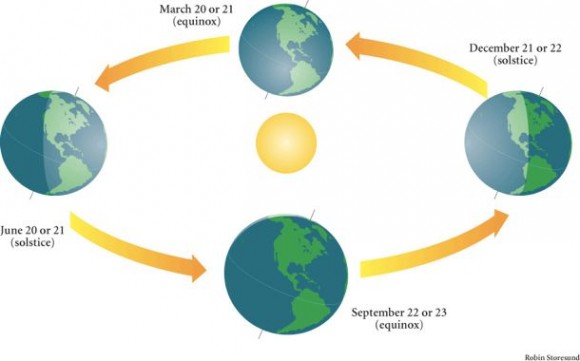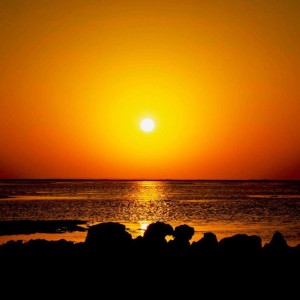Here’s a natural phenomenon you might never have imagined. That is, the sun actually rises and sets faster around the time of an equinox. In 2016, the vernal equinox falls on March 20 at 4:30 UTC (on March 20 at 12:30 a.m. ET, and on March 19 at 11:30 p.m. CT, 10:30 p.m. MT and 9:30 p.m. PT). The fastest sunsets (and sunrises) occur at or near the equinoxes. And the slowest sunsets (and sunrises) occur at or near the solstices. This is true whether you live in the Northern or Southern Hemisphere.
And, by the way, when we say sunset here, we’re talking about the actual number of minutes it takes for the body of the sun to sink below the western horizon.
Why does it happen? At every equinox, the sun rises due east and sets due west. That means – on the day of an equinox – the setting sun hits the horizon at its steepest possible angle. In other words, the sun is dropping almost straight down from above.
Meanwhile, at a solstice, the sun is setting farthest north or farthest south of due west. The farther the sun sets from due west along the horizon, the shallower the angle of the setting sun. That means a longer duration for sunset at the solstices.
The sunset duration varies by latitude, but let’s just consider one latitude, 40o North, the latitude Denver or Philadelphia in the United States, or Beijing in China. At that latitude, on the day of equinox, the sun sets in about 2 and 3/4 minutes.
Meanwhile, at 40o latitude, the solstice sun sets in roughly 3 and 1/4 minutes.

Equinoxes and solstices, via Geosync

Bottom line: The fastest sunsets of the year are happening now, around the time of the March equinox.
The lunar calendars are almost here! They’ll help you know the moon phases throughout the year.
